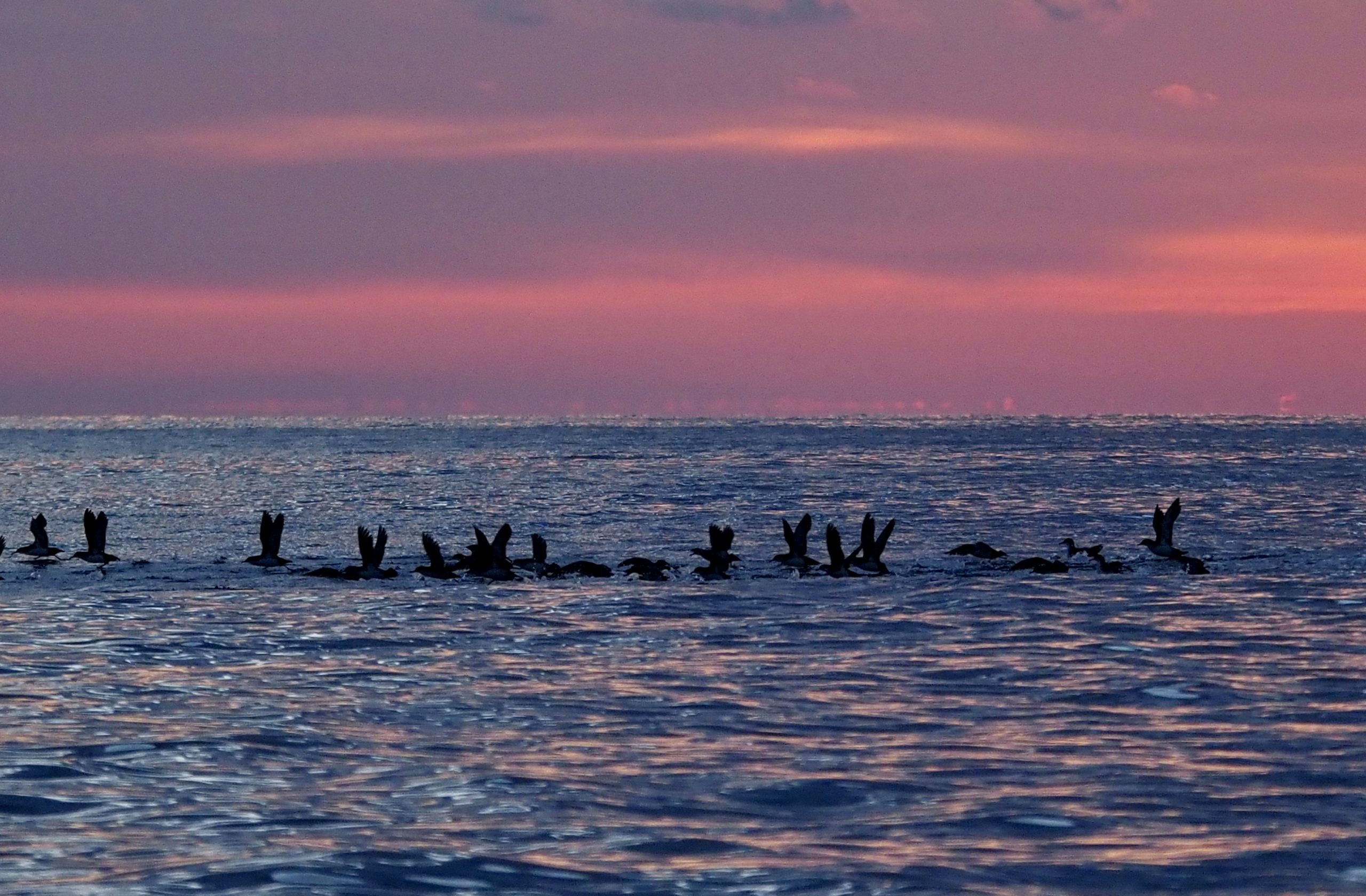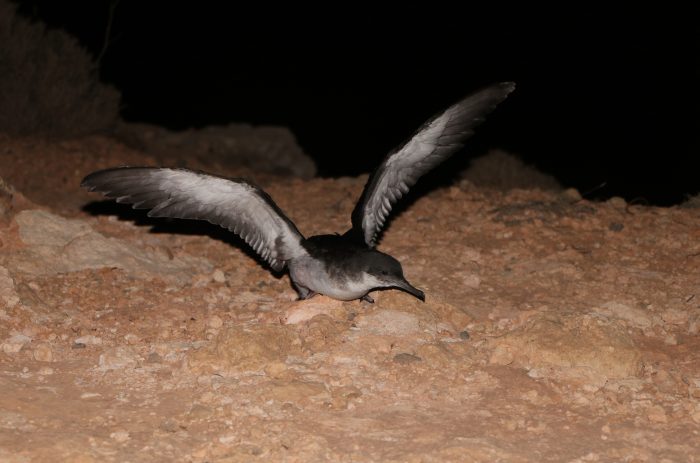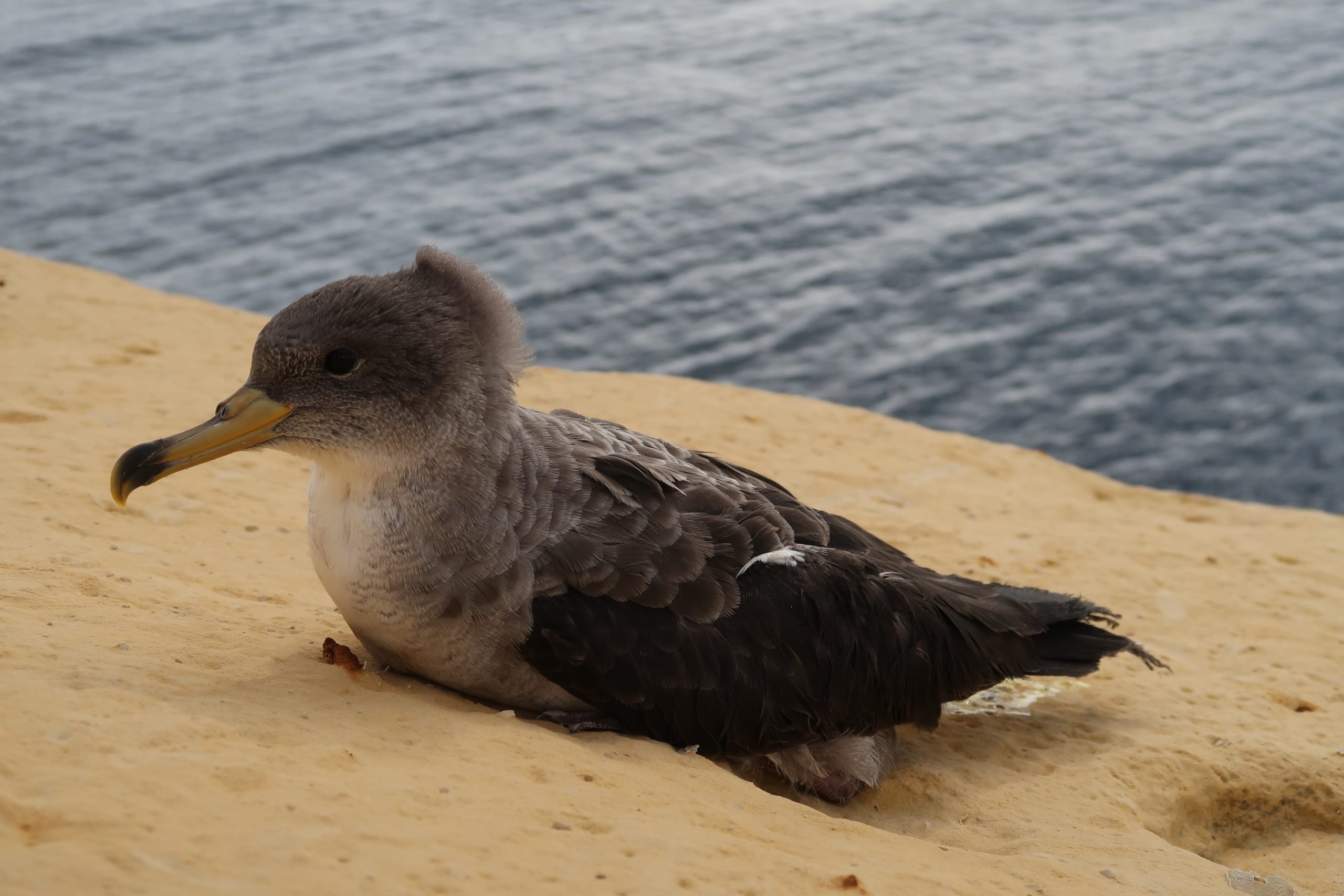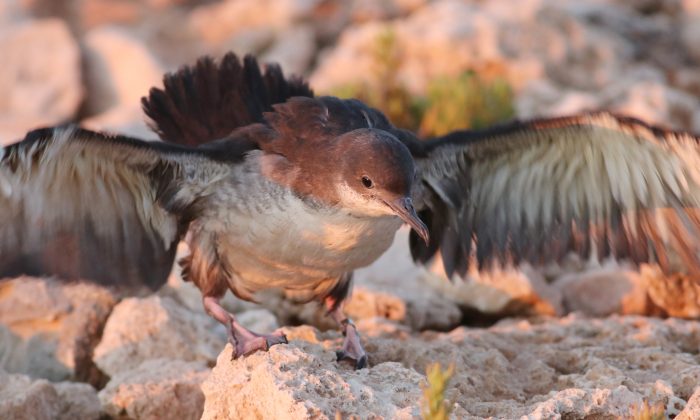The juvenile Yelkouan Shearwaters left Malta around mid-July and the Scopoli’s Shearwater fledglings will soon fly away to distant destinations. In our previous blog we learnt more about the period of the breeding season and how much effort it takes for the parents to raise their one and only chick. What happens after? Seabirds leave our shores and go back to their natural environment, leaving us with a lot of questions. What are they doing during the winter months?
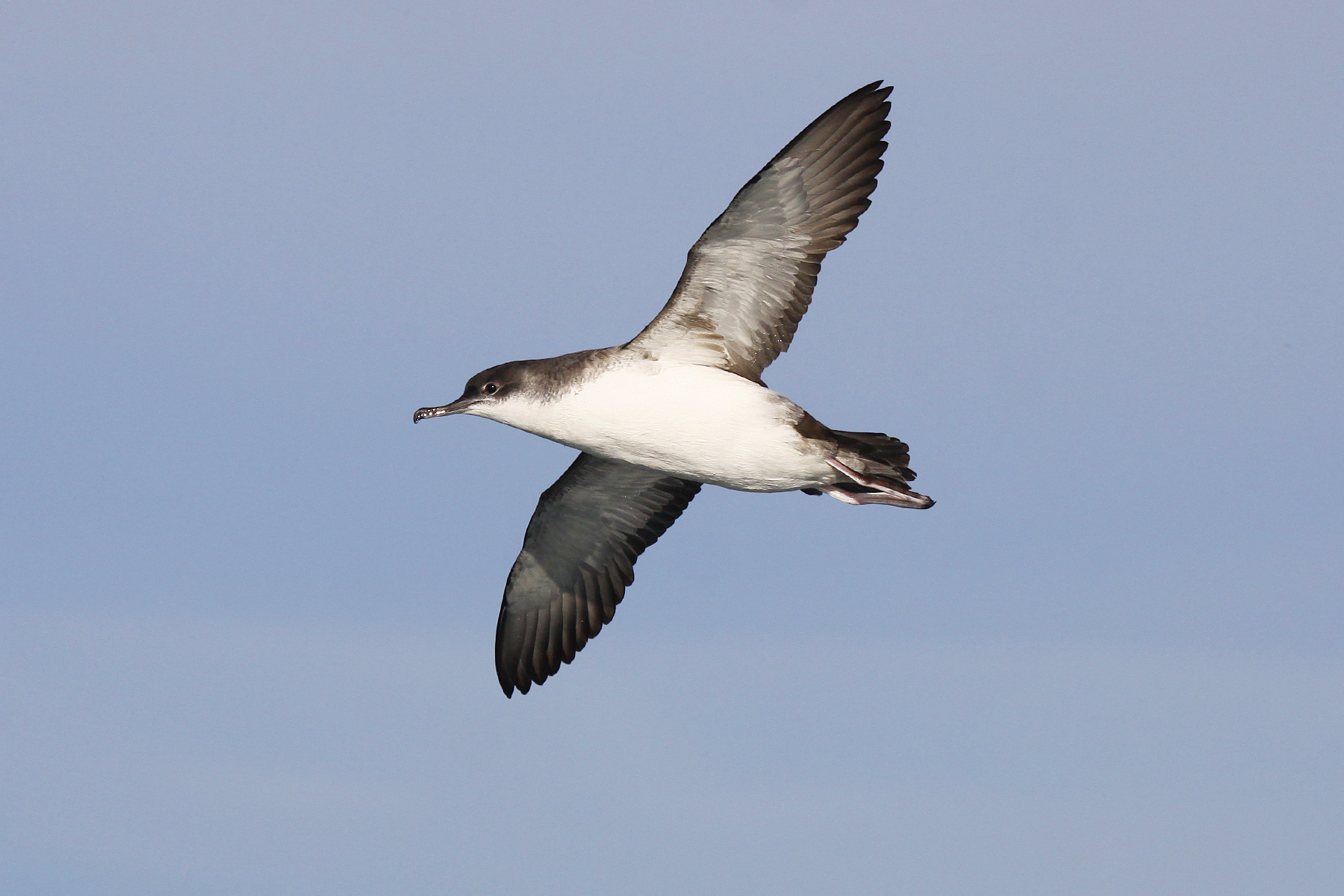
Shearwaters have a great sense of philopatry, and adults will keep coming back, year after year, to the same nesting site. It is also common to find a chick nesting in the very same cave where it was born. This special trait has permitted researchers over the years to know more about the life of adults when coming back to the colony.
Fledglings reach maturity after a few years and do not come back to land before that. When they are taking their first wingbeat in the open ocean, very little is known on their whereabouts, but we do have some clues.
How can a fledgling assess their migratory routes when the parents already left the burrow days before? Yelkouan Shearwaters are sexually mature at around three to four years old and Scopoli’s Shearwaters around six to eight years old. In this blog, we will learn more about their first years roaming the seas.
The incredible shearwater biology
Seabirds have their way to survive in this world, and they develop adaptations for the rough environment they are living in. The sea surrounding colonies is usually either an ecological desert or a rich source of food, experiencing unpredictable ups and downs due to the vastness of the sea.
Seabirds, in general, have high adult survival and are able to live a long life, from 30 to 35 years old for the Yelkouan and Scopoli’s Shearwaters. Like humans, they have a K-reproductive strategy. It means that every breeding season, they raise only one chick and overall make only a small contribution to the global population considering the total number of reproductive attempts during their long-life expectancy. Their strategy is to maximize lifetime reproductive success.
If partners have successfully bred, they could remain together all their life. The longer you live the more experienced you will be, and the higher will be your fitness (capacity to pass strong genes to the offspring).
Yet, the dynamic of the colony is also based on the immigration phenomenon, which connects different populations and mixes the gene pool. In every case, it represents an advantage for long-lived individuals because it is not based on how well you do one year but how many times you survive and breed.
Nevertheless, poor breeding seasons might last several years and affect the global population negatively where even slight changes in adult survival can have dramatic effects (Montevecchi et al. 2002).
First wingbeat in the open ocean
After one last feed, parents stop coming back around one week before the fledging event. Juvenile shearwaters pass several months in their burrow, and their life at sea can finally begin. However, many challenges await them. As soon as they leave their nest, the fledglings could face disorientation due to light pollution, causing them to end up stranded on land.
Once out in the open sea, they are faced with a brand new environment, and need to fend for themselves. Biologists found that during the migration from UK to South America, fledgling Manx Shearwaters will be flying several hundred kilometres away from their parents (Wynn et al. 2022). Fledglings also followed a more direct route crossing the ocean to their wintering grounds. Scientists suggest that the fact they are able to take a different migration route could be encoded genetically (Mouritsen 2003). It is essential that young and naive migratory seabirds inherit information that will allow them to reach their wintering grounds.
In 2022, some Yelkouan Shearwaters were equipped with trackers to compare the flying route from adults and fledglings from Malta. Adults would stay in the Central Mediterranean and could be using that time to replenish themselves and moult some feathers after the breeding season (Ramos et al. 2009). On the contrary, fledglings took a north to northeasterly direction. Despite the device had stopped transmitting, they reached the end of the Aegean Sea, and it is suspected they might have pursued further into the Black Sea by the Bosphorus as adults are wintering there. Scopoli’s Shearwaters fledge from Malta and go in the direction of Gibraltar to reach the west coast of Africa for their wintering grounds.
Time to explore
Nevertheless, seabirds in earlier life stages can differ significantly from adults in the spatial distribution at sea (Phillips et al. 2017). They may be more exposed to threats and experience higher mortality than adults in fishing gear because of their naive behaviour (Fayet et al. 2015), but also face other threats like starvation, plastic pollution, or infection.
For the return migration, we don’t know exactly how fledgling Yelkouan Shearwaters find their way. However, a study carried out on Manx Shearwaters can give some clues. They stay a few more months in their wintering grounds and migrate back via another route, which must be a genetic inheritance too, however they stop at 500 km from the colony (Wynn et al. 2022). The concrete reason is unknown; however a hypothesis is that they process information collected on the previous migration and gather information on navigation or currents and good foraging areas to finally find the best migration route over successive years.
Such hypothesis is consistent with the “exploration-refinement” hypothesis seen in other long-lived seabirds (Guilford et al. 2011). Apart from the first one, their migration would rely on learning, experience and memory. Plus, there is evidence that routes can be discovered through social learning with the precise migratory route learnt by watching experienced adults migrating (Chernetsov et al. 2004).
Once they’ve built their mental map as seen in a previous blog, they will start prospecting colonies. Prospecting consists of visiting breeding colonies at night during incubation and chick-rearing periods until choosing one to breed. To gather personal and social information on the local environment quality often involves prospecting phases to places they do not breed before taking the decision to emigrate or settle (Reed et al. 1999).
Until that time, they will continue wandering the ocean and offer us their elusive presence at sea and along the coastline.

Why is it important for biologists?
In the marine ecosystem, the presence and abundance of seabirds is an indicator of ocean health. However, the identification of the area is mainly made on adults’ movements, because data on juveniles is difficult to obtain due to an extended multi-year at-sea period following fledging (Phillips et al. 2017), which complicates the recapture of tagged birds.
Also, seabirds are top predators of the food web and compete with other predators, along with utilising the same areas as fishing grounds. The relationships between both groups are complex and represent a lot of interactions, some of them beneficial and other detrimental for seabirds.
Seabird conservation needs to be tackled at different levels, involving multiple experts, regions and countries and different public/private entities. It is only through transnational collaboration and adequate policies that we can ensure that seabird populations have a fighting chance to survive into the future.
Bibliography
Bugoni L, D’Alba L, Furness RW (2009) Marine habitat use of wintering Spectacled Petrels Procellaria conspicillata and overlap with longline fishery. Mar Ecol Prog Ser 374:273-285.
Chernetsov, N., Berthold, P. & Querner, U. 2004. Migratory orientation of first-year White Storks (Ciconia ciconia): inherited information and social interactions. J. Exp. Biol. 207: 937–943.
Fayet, A.L., Freeman, R., Shoji, A., Padget, O., Perrins, C.M. & Guilford, T. 2015. Lower foraging efficiency in immatures drives spatial segregation with breeding adults in a long-lived pelagic seabird. Anim. Behav. 110: 79–89.
Guilford, T., Freeman, R., Boyle, D., Dean, B., Kirk, H., Phillips, R. & Perrins, C. 2011. A dispersive migration in the Atlantic Puffin and its implications for migratory navigation. PLoS One 6: e21336.
Montevecchi, W. A. Interactions between fisheries and seabirds. In The Biology of Marine Birds. 2002. eds Schrieber, E. A. & Burger, J. 527–557 CRC Press.
Mouritsen, H. 2003. Avian Migration. Berlin: Springer Verlag.
Lascelles Ben-G, Gary M. Langham, Robert A. Ronconi, James B. Reid. 2012. From hotspots to site protection: Identifying Marine Protected Areas for seabirds around the globe. Biological Conservation, Volume 156, Pages 5-14, ISSN 0006-3207.
Ramos, Raül & Militão, Teresa & González-Solís, Jacob. Moulting strategies of a long-distance migratory seabird, the Mediterranean Cory’s Shearwater Calonectris diomedea. 2008. Ibis. 151. 151 – 159.
Reed, J. M. , Boulinier, T. , Danchin, E. , & Oring, L. W. (1999). Informed dispersal: Prospecting by birds for breeding sites. Current Ornithology, 15, 189–259.
Phillips, R.A., Lewis, S., González-Solís, J. & Daunt, F. Causes and consequences of individual variability and specialization in foraging and migration strategies of seabirds. 2017. Mar. Ecol. Prog. Ser. 578: 117–150.
Wynn, J., Guilford, T., Padget, O., Perrins, C.M., McKee, N., Gillies, N., Tyson, C., Dean, B., Kirk, H. and Fayet, A.L. Early-life development of contrasting outbound and return migration routes in a long-lived seabird. 2022. Ibis, 164: 596-602.
By Marc Schruoffeneger, Seabird Research Officer
With support from the BirdLife Malta seabird team

